| 1 | Aikanã | Massacá, Tubarão, Columbiara, Mundé, Huari, Aikaná | Aikaná
| | UF / País | População | Fonte/Ano | | RO | 350 | Siasi/Sesai 2014 |
|
| 2 | Aikewara | Suruí, Sororós, Aikewara | Tupi-Guarani
| | UF / País | População | Fonte/Ano | | PA | 386 | Siasi/Sesai 2014 |
|
| 3 | Akuntsu | Akunt'su | Tupari
| | UF / País | População | Fonte/Ano | | RO | 4 | Siasi/Sesai 2016 |
|
| 4 | Amanayê | Amanaié, Araradeua | Tupi-Guarani
| | UF / País | População | Fonte/Ano | | PA | 178 | Siasi/Sesai 2014 |
|
| 5 | Amondawa | | Tupi-Guarani
| | UF / País | População | Fonte/Ano | | RO | 126 | Siasi/Sesai 2014 |
|
| 6 | Anacé | | Anacé
| | UF / País | População | Fonte/Ano | | CE | 2018 | Siasi/Sesai 2014 |
|
| 7 | Anambé | | Tupi-Guarani
| | UF / País | População | Fonte/Ano | | PA | 161 | Siasi/Sesai 2014 |
|
| 8 | Aparaí | Apalai, Apalay, Appirois, Aparathy, Apareilles, Aparai | Karib
| | UF / País | População | Fonte/Ano | | PA | 414 | Siasi/Sesai 2014 | | Guiana Francesa | 40 | Eliane Camargo 2011 | | Suriname | 10 | Eliane Camargo 2011 |
|
| 9 | Apiaká | Apiacá | Tupi-Guarani
| | UF / País | População | Fonte/Ano | | MT. PA | 850 | Siasi/Sesai 2014 |
|
| 10 | Apinajé | Apinaié, Apinajés, Timbira, Apinayé | Jê
| | UF / País | População | Fonte/Ano | | TO | 2277 | Siasi/Sesai 2014 |
|
| 11 | Apurinã | Ipurina, Popukare | Aruak-maipure
| | UF / País | População | Fonte/Ano | | AM, MT,RO | 9487 | Siasi/Sesai 2014 |
|
| 12 | Aranã | | Aranã
| | UF / País | População | Fonte/Ano | | MG | 362 | Funasa 2010 |
|
| 13 | Arapaso | Arapasso, Arapaço | Tukano
| | UF / País | População | Fonte/Ano | | AM | 448 | Siasi/Sesai 2014 |
|
| 14 | Arapiuns | | Arapium
| | UF / País | População | Fonte/Ano | | 2204 | Siasi/Sesai 2012 |
|
| 15 | Arara | Arara do Pará, Ukaragma | Karib
| | UF / País | População | Fonte/Ano | | PA | 377 | Siasi/Sesai 2014 |
|
| 16 | Arara da Volta Grande do Xingu | Arara do Maia | Arara
| | UF / País | População | Fonte/Ano | | PA | 143 | Siasi/Sesai 2012 |
|
| 17 | Arara do Rio Amônia | Apolima-Arara, Arara Apolima |
| | UF / País | População | Fonte/Ano | | AC | 434 | Siasi/Sesai 2014 |
|
| 18 | Arara do Rio Branco | Arara do Beiradão, Arara do Aripuanã | Arara
| | UF / País | População | Fonte/Ano | | MT | 249 | Siasi/Sesai 2014 |
|
| 19 | Arara Shawãdawa | Arara do Acre, Shawanaua | Pano
| | UF / País | População | Fonte/Ano | | AC | 677 | Siasi/Sesai 2014 |
|
| 20 | Araweté | Araueté, Bïde | Tupi-Guarani
| | UF / País | População | Fonte/Ano | | PA | 450 | Siasi/Sesai 2012 |
|
| 21 | Arikapú | | Jabuti
| | UF / País | População | Fonte/Ano | | RO | 37 | Siasi/Sesai 2014 |
|
| 22 | Aruá | | Mondé
| | UF / País | População | Fonte/Ano | | RO | 94 | Siasi/Sesai 2014 |
|
| 23 | Ashaninka | Kampa, Ashenika | Aruak
| | UF / País | População | Fonte/Ano | | AC | 1291 | Siasi/Sesai 2012 | | Peru | 97477 | INEI 2007 |
|
| 24 | Asurini do Tocantins | Akuawa, Asurini | Tupi-Guarani
| | UF / País | População | Fonte/Ano | | TO | 516 | Siasi/Sesai 2012 |
|
| 25 | Asurini do Xingú | Assurini, Awaete | Tupi-Guarani
| | UF / País | População | Fonte/Ano | | PA | 165 | Siasi/Sesai 2012 |
|
| 26 | Atikum | Aticum |
| | UF / País | População | Fonte/Ano | | PE, BA | 7929 | Siasi/Sesai 2012 |
|
| 27 | Avá-Canoeiro | Canoeiro, Cara-Preta, Carijó | Tupi-Guarani
| | UF / País | População | Fonte/Ano | | TO, GO, MG | 25 | Siasi/Sedsi 2012 |
|
| 28 | Aweti | Awytyza, Enumaniá, Anumaniá, Auetö | Aweti
| | UF / País | População | Fonte/Ano | | MT | 195 | Ipeax 2011 |
|
| 29 | Bakairi | Bacairi, Kurã, Kurâ | Karib
| | UF / País | População | Fonte/Ano | | MT | 930 | Siasi/Sesai 2012 |
|
| 30 | Banawá | | Arawá
| | UF / País | População | Fonte/Ano | | AM | 200 | Siasi/Sesai 2012 |
|
| 31 | Baniwa | Baniva, Baniua, Curipaco, Walimanai | Aruak
| | UF / País | População | Fonte/Ano | | AM | 6243 | Siasi/Sesai 2012 | | Colombia | 7000 | 2000 | | Venezuela | 2408 | INE 2001 |
|
| 32 | Bará | Bara tukano, Waípinõmakã | Tukano
| | UF / País | População | Fonte/Ano | | AM | 22 | Siasi/Sesai 2012 | | Colombia | 296 | 1988 |
|
| 33 | Barasana | Panenoá | Tukano
| | UF / País | População | Fonte/Ano | | AM | 47 | Siasi/Sesai 2012 | | Colombia | 939 | 1998 |
|
| 34 | Baré | Hanera | Aruak
| | UF / País | População | Fonte/Ano | | AM | 10623 | Siasi/Sesai 2012 | | Venezuela | 2815 | INE 2001 |
|
| 35 | Borari | | Borari
| | UF / País | População | Fonte/Ano | | PA, AM | 1116 | ISA 2014 |
|
| 36 | Bororo | Coxiponé, Araripoconé, Araés, Cuiabá, Coroados, Porrudos, Boe | Bororo
| | UF / País | População | Fonte/Ano | | MT | 1686 | Siasi/Sesai 2012 |
|
| 37 | Canela Apanyekrá | Canela, Timbira | Jê
| | UF / País | População | Fonte/Ano | | MA | 1076 | Siasi/Sesai 2012 |
|
| 38 | Canela Ramkokamekrá | Canela, Timbira | Jê
| | UF / País | População | Fonte/Ano | | MA | 2175 | Siasi/Sesai 2012 |
|
| 39 | Chamacoco | | Samuko
| | UF / País | População | Fonte/Ano | | MS | 40 | Grumberg 1994 | | Paraguai | 1515 | II Censo Nacional Indígena 2002 |
|
| 40 | Charrua | | Charrua
| | UF / País | População | Fonte/Ano | | Argentina | 676 | INDEC 2004 | | RS | 27 | Siasi/Sesai 2012 |
|
| 41 | Chiquitano | Chiquito | Chiquito
| | UF / País | População | Fonte/Ano | | Bolivia | 108206 | Censo Nacional 2001 | | MT | 473 | Siasi/Funasa 2012 |
|
| 42 | Cinta larga | Matetamãe | Mondé
| | UF / País | População | Fonte/Ano | | MT, RO | 1758 | Siasi/Sesai 2012 |
|
| 43 | Coripaco | Curipaco, Curripaco, Kuripako | Aruak
| | UF / País | População | Fonte/Ano | | AM | 1504 | Siasi/Sesai 2012 | | Colombia | 7827 | Arango e Sánchez 2004 | | Venezuela | 4925 | INEI 2001 |
|
| 44 | Deni | Jamamadi | Arawá
| | UF / País | População | Fonte/Ano | | AM | 1394 | Siasi/Sesai 2012 |
|
| 45 | Desana | Desano, Dessano | Tukano
| | UF / País | População | Fonte/Ano | | AM | 2028 | Siasi/Sesai 2012 | | Colombia | 2036 | 1998 |
|
| 46 | Djeoromitxi | Jaboti | Jabuti
| | UF / País | População | Fonte/Ano | | RO | 215 | Siasi/Sesai 2012 |
|
| 47 | Dow | Maku, Kamã, Nukak Maku | Makú
| | UF / País | População | Fonte/Ano | | AM | 110 | DSEI Alto Rio Negro 2013 |
|
| 48 | Enawenê-Nawê | Enauenê nauê, Salumã, Enawenê-nawê | Aruak
| | UF / País | População | Fonte/Ano | | MT | 641 | Siasi/Sesai 2012 |
|
| 49 | Fulni-ô | | Yaté
| | UF / País | População | Fonte/Ano | | PE | 4687 | Siasi/Sesai 2012 |
|
| 50 | Galibi do Oiapoque | Galibi, Kalinã | Karib
| | UF / País | População | Fonte/Ano | | AP | 82 | Siasi/Sesai 2012 | | Guiana Francesa | 3000 | OkaMag 2002 | | Suriname | 3000 | OkaMag 2002 | | Venezuela | 11150 | OkaMag 2002 |
|
| 51 | Galibi-Marworno | Galibi do Uaçá, Aruá | Creoulo
| | UF / País | População | Fonte/Ano | | AP | 2377 | Siasi/Sesai 2001 |
|
| 52 | Gavião Parkatêjê | Gavião do Mãe Maria, Gavião do Oeste, Timbira, Parkatejê | Jê
| | UF / País | População | Fonte/Ano | | PA | 627 | Siasi/Sesai 2012 |
|
| 53 | Gavião Pykopjê | Gavião do Maranhão, Gavião Pukobiê, Gavião do Leste, Timbira, Pykopcatejê | Jê
| | UF / País | População | Fonte/Ano | | MA | 740 | Siasi/Sesai 2012 |
|
| 54 | Guajá / Awa-Guajá | Avá, Awá | Tupi-Guarani
| | UF / País | População | Fonte/Ano | | MA | 365 | Siasi/Sesai 2012 |
|
| 55 | Guajajara | Guajajara, Tenetehara | Tupi-Guarani
| | UF / País | População | Fonte/Ano | | MA | 26040 | Siasi/Sesai 2012 |
|
| 56 | Guarani | Kaiowá, Mbya, Ñandeva | Tupi-Guarani
| | UF / País | População | Fonte/Ano | | Argentina | 6500 | CTI/Grünberg 2008 | | Bolivia | 78359 | INE/Bolivia 2001 | | MS,SP,PR,RS,RJ,ES | 57923 | Siasi/Sesai 2012 | | Paraguai | 41200 | CTI/Grünberg 2008 |
|
| 57 | Guató | | Guató
| | UF / País | População | Fonte/Ano | | MS, MT | 374 | Siasi/Sesai 2012 |
|
| 58 | Hixkaryana | Hixkariana | Karib
| | UF / País | População | Fonte/Ano | | PA,AM | 1242 | Siasi/Sesai 2012 |
|
| 59 | Hupda | Maku, Macu | Makú
| | UF / País | População | Fonte/Ano | | AM | 1000 | Patricia 2012 | | Colombia | 500 | Patriciia 2012 |
|
| 60 | Ikolen | Gavião de Rondônia, Gavião Ikolen, Digut | Mondé
| | UF / País | População | Fonte/Ano | | RO | 603 | Siasi/Sesai 2012 |
|
| 61 | Ikpeng | Txicão, Ikpeng | Karib
| | UF / País | População | Fonte/Ano | | MT | 454 | Siasi/Sesai 2012 |
|
| 62 | Ingarikó | Akawaio, Kapon | Karib
| | UF / País | População | Fonte/Ano | | RR | 1231 | Siasi/Sesai 2012 | | Guiana | 4000 | 1990 | | Venezuela | 728 | 1992 |
|
| 63 | Iranxé Monoki | Irantxe, Manoki | Iranxe
| | UF / País | População | Fonte/Ano | | MT | 396 | Siasi/Sesai 2012 |
|
| 64 | Jamamadi | Yamamadi, Kanamanti | Arawá
| | UF / País | População | Fonte/Ano | | AM | 890 | Siasi?Sesai 2012 |
|
| 65 | Jarawara | Jarauara | Arawá
| | UF / País | População | Fonte/Ano | | AM | 218 | Funasa 2010 |
|
| 66 | Javaé | Karajá/Javaé, Itya Mahãdu | Karajá
| | UF / País | População | Fonte/Ano | | GO, TO | 1456 | Funasa 2009 |
|
| 67 | Jenipapo-Kanindé | Payaku | Jenipapo-Kanindé
| | UF / País | População | Fonte/Ano | | CE | 302 | Funasa 2010 |
|
| 68 | Jiahui | Jahoi, Diarroi, Djarroi, Parintintin, Diahoi, Diahui, Kagwaniwa | Tupi-Guarani
| | UF / País | População | Fonte/Ano | | AM | 97 | Funasa 2010 |
|
| 69 | Jiripancó | Jeripancó, Geripancó |
| | UF / País | População | Fonte/Ano | | AL | 2074 | Funasa 2010 |
|
| 70 | Juma | Yuma | Tupi-Guarani
| | UF / País | População | Fonte/Ano | | RO | 4 | Luciana França 2010 |
|
| 71 | Ka'apor | Urubu Kaapor, Kaapor | Tupi-Guarani
| | UF / País | População | Fonte/Ano | | MA, PA | 991 | Funasa 2006 |
|
| 72 | Kadiwéu | Kaduveo, Caduveo, Kadivéu, Kadiveo | Guaikuru
| | UF / País | População | Fonte/Ano | | MS | 1346 | Funasa 2009 |
|
| 73 | Kaiabi | Kawaiwete, Kayabi, Caiabi, Kaiaby, Kajabi, Cajabi | Tupi-Guarani
| | UF / País | População | Fonte/Ano | | MT | 2202 | Siasi/Sesai 2012 |
|
| 74 | Kaimbé | | | | UF / País | População | Fonte/Ano | | BA | 710 | Funasa 2006 |
|
| 75 | Kaingang | Guayanás | Jê
| | UF / País | População | Fonte/Ano | | PR, RS, SC, SP | 33064 | Funasa 2009 |
|
| 76 | Kaixana | Caixana | Kaixana
| | UF / País | População | Fonte/Ano | | AM | 572 | Funasa 2010 |
|
| 77 | Kalabaça | | | | UF / País | População | Fonte/Ano | | CE | 221 | Funasa 2010 |
|
| 78 | Kalankó | Cacalancó |
| | UF / País | População | Fonte/Ano | | AL | 390 | Funasa 2009 |
|
| 79 | Kalapalo | | Karib
| | UF / País | População | Fonte/Ano | | MT | 385 | Ipeax 2011 |
|
| 80 | Kamayurá | Kamayurá | Tupi-Guarani
| | UF / País | População | Fonte/Ano | | MT | 467 | Ipeax 2011 |
|
| 81 | Kamba | | | | UF / País | População | Fonte/Ano | | MS | | |
|
| 82 | Kambeba | Cambemba, Omaguá | Tupi-Guarani
| | UF / País | População | Fonte/Ano | | AM | 780 | Funasa 2010 | | Peru | 3500 | Benedito Maciel 1994 |
|
| 83 | Kambiwá | Cambiua |
| | UF / País | População | Fonte/Ano | | PE | 2954 | Funasa 2010 |
|
| 84 | Kanamari | Canamari, Tukuna | Katukina
| | UF / País | População | Fonte/Ano | | AM | 3167 | Funasa 2010 |
|
| 85 | Kanindé | | | | UF / País | População | Fonte/Ano | | CE | 714 | Funasa 2010 |
|
| 86 | Kanoê | Canoe, Kapixaná, Kapixanã | Kanoe
| | UF / País | População | Fonte/Ano | | RO | 282 | Siasi/Sesai 2012 |
|
| 87 | Kantaruré | Cantaruré, Pankararu | Kantaruré
| | UF / País | População | Fonte/Ano | | BA | 340 | Funasa 2010 |
|
| 88 | Kapinawa | Capinawa | | | UF / País | População | Fonte/Ano | | PE | 3702 | Funasa 2009 |
|
| 89 | Karajá | Caraiauna, Iny | Karajá
| | UF / País | População | Fonte/Ano | | GO, MT, PA, TO | 3198 | Funasa 2010 |
|
| 90 | Karajá do Norte | Xambioá, Ixybiowa, Iraru Mahãndu, Karajá do Norte | Karajá
| | UF / País | População | Fonte/Ano | | TO | 268 | Funasa 2010 |
|
| 91 | Karapanã | Muteamasa, Ukopinõpõna | Tukano
| | UF / País | População | Fonte/Ano | | AM | 63 | Dsei/Foirn 2005 | | Colombia | 412 | 1988 |
|
| 92 | Karapotó | | Tupi-Guarani
| | UF / País | População | Fonte/Ano | | AL | 2189 | Funasa 2006 |
|
| 93 | Karipuna | Ahé, Karipuna, Ahé | Tupi-Guarani
| | UF / País | População | Fonte/Ano | | RO | 28 | Funasa 2010 |
|
| 94 | Karipuna do Amapá | | Creoulo
| | UF / País | População | Fonte/Ano | | AP | 2421 | Funasa 2010 |
|
| 95 | Kariri | | Kariri
| | UF / País | População | Fonte/Ano | | CE | 118 | Funasa 2010 |
|
| 96 | Kariri-Xokó | Cariri-xocó | Kariri-Xocó
| | UF / País | População | Fonte/Ano | | AL | 2311 | Funasa 2009 |
|
| 97 | Karitiana | Caritiana, Yjxa | Arikén
| | UF / País | População | Fonte/Ano | | RO | 320 | 2005 |
|
| 98 | Karo | Arara de Rondônia, Arara Karo, Arara Tupi, Ntogapíd, Ramaráma, Urukú, Urumí, I´târap | Ramarama
| | UF / País | População | Fonte/Ano | | RO | 208 | Kanindé 2006 |
|
| 99 | Karuazu | | Karuazu
| | UF / País | População | Fonte/Ano | | AL | 1013 | Funasa 2010 |
|
| 100 | Kassupá | | Aikaná
| | UF / País | População | Fonte/Ano | | RO | 210 | MPF em RO 2011 |
|
| 101 | Katuenayana | | Karib | | UF / País | População | Fonte/Ano | | AM, PA, RR | 133 | Funasa 2010 |
|
| 102 | Katukina | Tukuna | Katukina do Rio Biá
| | UF / País | População | Fonte/Ano | | AM | 462 | Funasa 2010 |
|
| 103 | Katukina Pano | | Pano
| | UF / País | População | Fonte/Ano | | AC | 594 | Funasa 2010 |
|
| 104 | Kaxarari | Caxarari | Pano
| | UF / País | População | Fonte/Ano | | AM, RO | 318 | Funasa 2010 |
|
| 105 | Kaxinawá | Cashinauá, Caxinauá, Huni Kuin, huni kuin | Pano
| | UF / País | População | Fonte/Ano | | AC | 7535 | Funasa 2010 | | Peru | 2419 | INEI 2007 |
|
| 106 | Kaxixó | |
| | UF / País | População | Fonte/Ano | | MG | 308 | Funasa 2010 |
|
| 107 | Kaxuyana | Caxuiana, Katxuyana | Karib
| | UF / País | População | Fonte/Ano | | PA | 350 | João do Valle Kaxuyana 2009 |
|
| 108 | Kayapó | Kaiapó, Caiapó, Gorotire, Mekrãgnoti, Kuben-Kran-Krên, Kôkraimôrô, Metyktire, Xikrin, Kararaô, Mebengokre | jê
Kayapó Moykarakô
Xikrin 
Kayapó Gorotite
| | UF / País | População | Fonte/Ano | | MT, PA | 8638 | Funasa 2010 |
|
| 109 | Kinikinau | Kinikinao, Kinikinawa, Guaná | Aruak
| | UF / País | População | Fonte/Ano | | MS | 250 | Souza 2005 |
|
| 110 | Kiriri | Kariri | Kariri
| | UF / País | População | Fonte/Ano | | BA | 2182 | Funasa 2010 |
|
| 111 | Kisidjê | Suyá, Kisidjê | Jê
| | UF / País | População | Fonte/Ano | | MT | 330 | Unifesp 2010 |
|
| 112 | Koiupanká | | | | UF / País | População | Fonte/Ano | | AL | 1263 | Funasa 2009 |
|
| 113 | Kokama | Cocama, Kocama | Tupi-Guarani
| | UF / País | População | Fonte/Ano | | AM | 9636 | Funasa 2010 | | Colombia | 236 | 1988 | | Peru | 11370 | INEI 2007 |
|
| 114 | Korubo | | Pano
| | UF / País | População | Fonte/Ano | | AM | 27 | FPEVJ 2010 |
|
| 115 | Kotiria | Wanana | Tukano
| | UF / País | População | Fonte/Ano | | AM | 735 | Dsei/Foirn 2005 | | Colombia | 1113 | 1988 |
|
| 116 | Krahô | Craô, Kraô, Timbira, Mehin | Jê
| | UF / País | População | Fonte/Ano | | TO | 2463 | Funasa 2010 |
|
| 117 | Krahô-Kanela | | Jê | | UF / País | População | Fonte/Ano | | TO | 84 | Funasa 2010 |
|
| 118 | Krenak | Crenaque, Crenac, Krenac, Botocudos, Aimorés, Krén | Krenák
| | UF / País | População | Fonte/Ano | | MT, MG, SP | 350 | Funasa 2010 |
|
| 119 | Krenyê | Timbira | Jê
| | UF / País | População | Fonte/Ano | | MA | | |
|
| 120 | Krepumkateyê | Timbira | Jê | | UF / País | População | Fonte/Ano | | MA | | |
|
| 121 | Krikatí | Kricati, Kricatijê, Põcatêjê, Timbira, Kricatijê | Jê
| | UF / País | População | Fonte/Ano | | MA | 921 | Funasa 2010 |
|
| 122 | Kubeo | Cubeo, Cobewa, Kubéwa, Pamíwa | Tukano
| | UF / País | População | Fonte/Ano | | AM | 489 | Siasi/Sesai 2012 | | Colombia | 4238 | 1988 | | Venezuela | 25 | INEI 2001 |
|
| 123 | Kuikuro | Ipatse ótomo, Ahukugi ótomo, Lahatuá ótomo | Karib
| | UF / País | População | Fonte/Ano | | MT | 522 | Ipeax 2011 |
|
| 124 | Kujubim | Kuyubi | Txapakura
| | UF / País | População | Fonte/Ano | | RO | 55 | Funasa 2006 |
|
| 125 | Kulina | Culina, Madiha, Madija | Arawa
| | UF / País | População | Fonte/Ano | | AM | 5558 | Funasa 2010 | | Peru | 417 | INEI 2007 |
|
| 126 | Kulina Pano | Culina | Pano | | UF / País | População | Fonte/Ano | | AM | 134 | Funasa 2010 |
|
| 127 | Kuntanawa | Kontanawa, Contanawa | Pano
| | UF / País | População | Fonte/Ano | | AC | 400 | Pantoja 2008 |
|
| 128 | Kuruaya | Xipáia-Kuruáia, Kuruaia | Munduruku
| | UF / País | População | Fonte/Ano | | PA | 159 | Funai/Altamira 2010 |
|
| 129 | Kwazá | Coaiá, Koaiá | Koazá
| | UF / País | População | Fonte/Ano | | RO | 40 | Van der Voort 2008 |
|
| 130 | Makuna | Yeba-masã | Tukano
| | UF / País | População | Fonte/Ano | | AM | 32 | Dsei/Foirn 2005 | | Colombia | 528 | Colômbia 1988 |
|
| 131 | Makurap | Macurap | Tupari
| | UF / País | População | Fonte/Ano | | RO | 478 | Funasa 2010 |
|
| 132 | Makuxi | Macuxi, Macushi, Pemon | Karib
| | UF / País | População | Fonte/Ano | | RR | 29931 | Funasa 2010 | | Guiana | 9500 | Guiana 2001 | | Venezuela | 83 | INEI 2001 |
|
| 133 | Manchineri | Machineri, Yine | Aruak
| | UF / País | População | Fonte/Ano | | Bolivia | 15 | Censo Nacional 2001 | | AC | 997 | Siasi/Sesai 2012 | | Peru | 90 | INEI 2007 |
|
| 134 | Marubo | | Pano
| | UF / País | População | Fonte/Ano | | AM | 1705 | Funasa 2010 |
|
| 135 | Matipu | | Karib
| | UF / País | População | Fonte/Ano | | MT | 149 | Ipeax 2011 |
|
| 136 | Matis | Mushabo, Deshan Mikitbo | Pano
| | UF / País | População | Fonte/Ano | | AM | 390 | Funasa 2010 |
|
| 137 | Matsés | Mayoruna | Pano
| | UF / País | População | Fonte/Ano | | AM | 1592 | Funasa 2006 | | Peru | 1724 | INEI 2007 |
|
| 138 | Maxakali | Maxacalis, Monacó, Kumanuxú, Tikmuún, Kumanaxú - tikmu'ún | Maxakali
| | UF / País | População | Fonte/Ano | | MG | 1500 | Funasa 2010 |
|
| 139 | Mehinako | Meinaco, Meinacu, Meinaku | Aruak
| | UF / País | População | Fonte/Ano | | MT | 254 | Ipeax 2011 |
|
| 140 | Menky Manoki | Munku, Menku, Myky, Manoki | Iranxe
| | UF / País | População | Fonte/Ano | | MT | 102 | Funasa 2010 |
|
| 141 | Migueleno | Miqueleno | | | UF / País | População | Fonte/Ano | | RO | 242 | 2010 |
|
| 142 | Miranha | Mirana | Bora
| | UF / País | População | Fonte/Ano | | AM | 836 | Funasa 2006 | | Colombia | 445 | Colômbia 1988 |
|
| 143 | Mirity-tapuya | Buia-tapuya | Tukano | | UF / País | População | Fonte/Ano | | AM | 75 | Dsei/Foirn 2005 |
|
| 144 | Munduruku | Mundurucu, Maytapu, Cara Preta, Wuyjuyu | Munduruku
| | UF / País | População | Fonte/Ano | | AM, MT, PA | 11630 | Funasa 2010 |
|
| 145 | Mura | | Mura
| | UF / País | População | Fonte/Ano | | AM | 15713 | Funasa 2010 |
|
| 146 | Nadöb | Macú Nadob; Maku Nadeb | Makú
| | UF / País | População | Fonte/Ano | | AM | 483 | Siasi/Sesai 2014 |
|
| 147 | Nahukuá | Nafukwá, Nahkwá, Nafuquá, Nahukwá | Karib
| | UF / País | População | Fonte/Ano | | MT | 126 | Ipeax 2011 |
|
| 148 | Nambikwara | Nambiquara, Anunsu | Nambikwára Mamaindé
| | UF / País | População | Fonte/Ano | | MT, RO | 1950 | Funasa 2010 |
|
| 149 | Naruvotu | | Karib
| | UF / País | População | Fonte/Ano | | MT | 81 | Fiorini 2003 |
|
| 150 | Nawa | Náua |
| | UF / País | População | Fonte/Ano | | AC | 423 | Correia 2005 |
|
| 151 | Nukini | Nuquini | Pano
| | UF / País | População | Fonte/Ano | | AC | 622 | Funasa 2010 |
|
| 152 | Ofaié | Ofaié-Xavante | Ofayé
| | UF / País | População | Fonte/Ano | | MS | 60 | Funasa 2010 |
|
| 153 | Oro Win | Oro Towati', Oroin, Uruin, Oro Win, Oro Towati' | Txapakura
| | UF / País | População | Fonte/Ano | | RO | 73 | Funasa 2010 |
|
| 154 | Palikur | Paricuria, Paricores, Palincur, Parikurene, Parinkur-Iéne, Païkwené, Païkwené | Aruak
| | UF / País | População | Fonte/Ano | | AP | 1293 | Iepé 2010 | | Guiana Francesa | 720 | Passes 1994 |
|
| 155 | Panará | Kreen-Akarore, Krenhakore, Krenakore, Índios Gigantes | Jê
| | UF / País | População | Fonte/Ano | | MT, PA | 437 | Funasa 2010 |
|
| 156 | Pankaiuká | | | | UF / País | População | Fonte/Ano | | PE | | |
|
| 157 | Pankará | | Pankará
| | UF / País | População | Fonte/Ano | | PE | 2558 | Funasa 2010 |
|
| 158 | Pancararé |
| Pancararé
| | UF / País | População | Fonte/Ano | | BA | 1640 | Funasa 2010 |
|
| 159 | Pankararu | | Pankararu | | UF / País | População | Fonte/Ano | | MG, PE, SP | 8477 | Funasa 2010 |
|
| 160 | Pankaru | Pankararu-Salambaia |
| | UF / País | População | Fonte/Ano | | BA | 179 | Funasa 2006 |
|
| 161 | Parakanã | | Tupi-Guarani
| | UF / País | População | Fonte/Ano | | PA | 1266 | Funai/Altamira 2010 |
|
| 162 | Paresi | Pareci, Halíti, Arití | Aruak
| | UF / País | População | Fonte/Ano | | MT, RO | 1955 | Siasi/Sesai 2012 |
|
| 163 | Parintintin | Cabahyba | Tupi-Guarani
| | UF / País | População | Fonte/Ano | | AM | 418 | Funasa 2010 |
|
| 164 | Patamona | Ingarikó, Kapon | Karib | | UF / País | População | Fonte/Ano | | RR | 128 | Funasa 2010 | | Guiana | 5500 | 1990 |
|
| 165 | Pataxó | Patachó, Patashó, Pataso | Patxó
| | UF / País | População | Fonte/Ano | | BA, MG | 11833 | Funasa 2010 |
|
| 166 | Pataxó Hã-Hã-Hãe | | Maxakali
| | UF / País | População | Fonte/Ano | | BA | 2375 | Funasa 2010 |
|
| 167 | Paumari | Pamoari | Arawá
| | UF / País | População | Fonte/Ano | | AM | 1559 | Funasa 2010 |
|
| 168 | Payayá | | | | UF / País | População | Fonte/Ano | | BA | | |
|
| 169 | Pipipã | | Pipipã
| | UF / País | População | Fonte/Ano | | PE | 1640 | Funasa 2006 |
|
| 170 | Pirahã | Mura Pirahã | Mura
| | UF / País | População | Fonte/Ano | | AM | 420 | Funasa 2010 |
|
| 171 | Pira-tapuya | Piratapuya, Piratapuyo, Piratuapuia, Pira-Tapuya | Tukano
| | UF / País | População | Fonte/Ano | | AM | 1433 | Dsei/Foirn 2005 | | Colombia | 400 | 1988 |
|
| 172 | Pitaguary | Potiguara, Pitaguari | Pitaguary
| | UF / País | População | Fonte/Ano | | CE | 3793 | Funasa 2010 |
|
| 173 | Potiguara | | Tupi-Guarani
| | UF / País | População | Fonte/Ano | | CE, PB | 16095 | Funasa 2009 |
|
| 174 | Puroborá | | | | UF / País | População | Fonte/Ano | | RO | 209 | Funasa 2010 |
|
| 175 | Puyanawa | Poianaua | Pano
| | UF / País | População | Fonte/Ano | | AC | 540 | Funasa 2010 |
|
| 176 | Rikbaktsá | Erigbaktsa, Canoeiros, Orelhas de Pau, Rikbaktsá | Rikbaktsá
| | UF / País | População | Fonte/Ano | | MT | 1324 | Funasa 2010 |
|
| 177 | Sakurabiat | Sakiriabar, Mequéns, Sakurabiat | Tupari
| | UF / País | População | Fonte/Ano | | RO | 161 | Funasa 2010 |
|
| 178 | Sateré Mawé | Sateré-Maué | Mawé
| | UF / País | População | Fonte/Ano | | AM | 10761 | Funasa 2010 |
|
| 179 | Shanenawa | Katukina Shanenawa, Shanenawa | Pano | | UF / País | População | Fonte/Ano | | AC | 411 | Funasa 2010 |
|
| 180 | Siriano | | Tukano
| | UF / País | População | Fonte/Ano | | AM | 71 | Dsei/Foirn 2005 | | Colombia | 665 | 1988 |
|
| 181 | Surui Paiter | Paiter, Paiter | Mondé
| | UF / País | População | Fonte/Ano | | MT, RO | 1172 | Funasa 2010 |
|
| 182 | Tabajara | | Tupi-Guarani
| | UF / País | População | Fonte/Ano | | CE | 2982 | Funasa 2010 |
|
| 183 | Tapayuna | Beiço de pau, Suyá Novos, Suyá Ocidentais, Kajkwakratxi, Kajkwakratxi | Jê
| | UF / País | População | Fonte/Ano | | MT | 160 | Ropkrãse Suiá e Teptanti Suiá 2010 |
|
| 184 | Tapeba | Tapebano, Perna-de-pau | Tapeba
| | UF / País | População | Fonte/Ano | | CE | 6600 | Funasa 2010 |
|
| 185 | Tapirapé | | Tupi-Guarani
| | UF / País | População | Fonte/Ano | | MT, TO | 655 | Funasa 2010 |
|
| 186 | Tapuio | Tapuya, Tapuia |
| | UF / País | População | Fonte/Ano | | GO | 298 | Funai/Goiás Velho 2010 |
|
| 187 | Tariana | | Aruak
| | UF / País | População | Fonte/Ano | | AM | 2067 | Funasa 2010 | | Colombia | 205 | 1988 |
|
| 188 | Tatuyo | Pamoa-masa | Tukano | |
| 189 | Taurepang | Taulipang, Taurepangue, Taulipangue, Pemon | Karib
| | UF / País | População | Fonte/Ano | | RR | 673 | Funasa 2010 | | Venezuela | 27157 | INE 2001 |
|
| 190 | Tembé | Tenetehara | Tupi-Guarani
| | UF / País | População | Fonte/Ano | | AM, PA | 1502 | Funasa 2010 |
|
| 191 | Tenharim | Kagwahiva | Tupi-Guarani
| | UF / País | População | Fonte/Ano | | AM | 703 | Funasa 2010 |
|
| 192 | Terena | | Aruak
| | UF / País | População | Fonte/Ano | | MT, MS, SP | 24776 | Funasa 2009 |
|
| 193 | Ticuna | Tikuna, Tukuna, Maguta | Tikuna
| | UF / País | População | Fonte/Ano | | AM | 36377 | Funasa 2009 | | Colombia | 8000 | Goulard, J. P. 2011 | | Peru | 6982 | INEI 2007 |
|
| 194 | Tingui Botó | | Tingui Botó
| | UF / País | População | Fonte/Ano | | AL | 390 | Siasi/Sesai 2012 |
|
| 195 | Tiriyó | Tirió, Trio, Tarona, Yawi, Pianokoto, Piano, Wü tarëno, Txukuyana, Ewarhuyana, Akuriyó | Karib
| | UF / País | População | Fonte/Ano | | AP, PA | 1464 | Funasa 2010 | | Suriname | 1845 | Ellen-Rose Kambel 2006 |
|
| 196 | Torá | | Txapakura
| | UF / País | População | Fonte/Ano | | AM | 312 | Funasa 2006 |
|
| 197 | Tremembé | | Tremembé (no passado - sem registro atual)
| | UF / País | População | Fonte/Ano | | CE | 2971 | Funasa 2010 |
|
| 198 | Truká | | i
| | UF / País | População | Fonte/Ano | | BA, PE | 3078 | Funasa 2009 |
|
| 199 | Trumai | | Trumái
| | UF / País | População | Fonte/Ano | | MT | 97 | Ipeax 2011 |
|
| 200 | Tsohom-dyapa | Tucano, Tukano, Tukún Djapá, Tukano Djapá, Txunhuân Djapá, Tsunhuam Djapa, | Katukina
| | UF / País | População | Fonte/Ano | | AM | 38 | CTI 2016 |
|
| 201 | Tukano | Ye´pâ-masa, Dasea | Tukano
| | UF / País | População | Fonte/Ano | | AM | 6241 | Dsei/Foirn 2005 | | Colombia | 6330 | 1988 | | Venezuela | 11 | INE 2001 |
|
| 202 | Tumbalalá | |
| | UF / País | População | Fonte/Ano | | BA | 1160 | Funasa 2010 |
|
| 203 | Tunayana | | Karíb | | UF / País | População | Fonte/Ano | | PA | | |
|
| 204 | Tupari | | Tupari
| | UF / País | População | Fonte/Ano | | RO | 517 | Funasa 2010 |
|
| 205 | Tupinambá | Tupinambá | Tupi-Guarani
| | UF / País | População | Fonte/Ano | | BA | 4729 | Funasa 2009 |
|
| 206 | Tupinikim | Tupiniquim | Tupi-Guarani
| | UF / País | População | Fonte/Ano | | ES | 2630 | Funasa 2010 |
|
| 207 | Turiwara | | | | UF / País | População | Fonte/Ano | | PA | | |
|
| 208 | Tuxá | | Tuxá
| | UF / País | População | Fonte/Ano | | AL, BA, PE | 2142 | Funasa 2010 |
|
| 209 | Tuyuka | Tuiuca | Tukano
| | UF / País | População | Fonte/Ano | | AM | 825 | Dsei/Foirn 2005 | | Colombia | 570 | 1988 |
|
| 210 | Umutina | Barbados, Omotina | Bororo
| | UF / País | População | Fonte/Ano | | MT | 445 | Associação Indígena Umutina Otoparé 2009 |
|
| 211 | Uru-Eu-Wau-Wau | Bocas-negras, Bocas-pretas, Cautários, Sotérios, Cabeça-vermelha, Urupain, Jupaú, Amondawa, Urupain, Parakuara, Jurureís | Tupi-Guarani
| | UF / País | População | Fonte/Ano | | RO | 115 | Funasa 2010 |
|
| 212 | Waimiri Atroari | Kinja, Kiña, Uaimiry, Crichaná | Karib
| | UF / País | População | Fonte/Ano | | AM | 1515 | PWA 2011 |
|
| 213 | Waiwai | | Karíb
| | UF / País | População | Fonte/Ano | | AM, PA, RR | 2914 | Zea 2005 | | Guiana | 170 | Weparu Alemán 2006 |
|
| 214 | Wajãpi | Wayapi, Wajapi, Oiampi | Tupi-Guarani
| | UF / País | População | Fonte/Ano | | AP,PA | 956 | Siasi/Funasa 2010 | | Guiana Francesa | 950 | Grenand 2009 |
|
| 215 | Wajuru | | Tupari
| | UF / País | População | Fonte/Ano | | RO | 240 | Siasi/Sesai 2012 |
|
| 216 | Wapixana | | Aruak
| | UF / País | População | Fonte/Ano | | RR | 7832 | Funasa 2010 | | Guiana | 6000 | Forte 1990 | | Venezuela | 17 | INE 2001 |
|
| 217 | Warekena | Werekena | Aruak
| | UF / País | População | Fonte/Ano | | AM | 887 | Funasa 2010 | | Venezuela | 513 | INE 2001 |
|
| 218 | Warí | Uari, Wari, Pakaá Nova | Txapakura
| | UF / País | População | Fonte/Ano | | RO | 2721 | Funasa 2006 |
|
| 219 | Wassu Cocal | | Wassu Cocal
| | UF / País | População | Fonte/Ano | | AL | 1806 | Funasa 2010 |
|
| 220 | Wauja | Waurá | Aruak
| | UF / País | População | Fonte/Ano | | MT | 529 | Siasi/Sesai 2012 |
|
| 221 | Wayana | Upurui, Roucouyen, Orkokoyana, Urucuiana, Urukuyana, Alucuyana, Wayana | Karib
| | UF / País | População | Fonte/Ano | | AP, PA | 304 | Funasa 2010 | | Guiana Francesa | 800 | Lopes 2002 | | Suriname | 500 | Lopes 2002 |
|
| 222 | Witoto | Uitoto | Witoto
| | UF / País | População | Fonte/Ano | | AM | 44 | Funasa 2010 | | Colombia | 5939 | 1988 | | Peru | 1864 | INEI 2007 |
|
| 223 | Xakriabá | | Jê
| | UF / País | População | Fonte/Ano | | MG | 9196 | Funasa 2010 |
|
| 224 | Xavante | Akwe, A´uwe | Jê
| | UF / País | População | Fonte/Ano | | MT | 15315 | Funasa 2010 |
|
| 225 | Xerente | Acuen, Akwen, Akwê | Jê
| | UF / País | População | Fonte/Ano | | TO | 3017 | Funasa 2010 |
|
| 226 | Xetá | héta, chetá, setá | Tupi-Guarani
| | UF / País | População | Fonte/Ano | | PR | 86 | da Silva 2006 |
|
| 227 | Xipaya | Xipáya | Juruna
| | UF / País | População | Fonte/Ano | | PA | 84 | Funai/Altamira 2010 |
|
| 228 | Xokleng | Aweikoma, Xokrén, Kaingang de Santa Catarina, Aweikoma-Kaingang, Laklanõ | Jê
| | UF / País | População | Fonte/Ano | | SC | 1853 | Funasa 2010 |
|
| 229 | Xokó | Chocó, Xocó | Xokó
| | UF / País | População | Fonte/Ano | | SE | 400 | Funasa 2010 |
|
| 230 | Xukuru | Xucuru |
| | UF / País | População | Fonte/Ano | | PE | 12139 | Funasa 2010 |
|
| 231 | Xukuru-Kariri | Xucuru |
| | UF / País | População | Fonte/Ano | | AL, BA | 2926 | Funasa 2010 |
|
| 232 | Yaminawá | Iaminaua, Jaminawa | Pano
| | UF / País | População | Fonte/Ano | | Bolivia | 630 | 1997 | | AC, AM | 1298 | Funasa 2010 | | Peru | 600 | INEI 2007 |
|
| 233 | Yanomami | Yanoama, Yanomani, Ianomami | Yanomami
| | UF / País | População | Fonte/Ano | | RR, AM | 19338 | DSEI Yanomami - Sesai 2011 | | Venezuela | 16000 | 2009 |
|
| 234 | Yawalapiti | | Aruak
| | UF / País | População | Fonte/Ano | | MT | 156 | Ipeax 2011 |
|
| 235 | Yawanawá | Iauanaua | Pano
| | UF / País | População | Fonte/Ano | | Bolivia | 630 | 1993 | | AC | 541 | Funasa 2010 | | Peru | 324 | 1993 |
|
| 236 | Ye'Kuana | Yecuana, Maiongong, So'to | Karib
| | UF / País | População | Fonte/Ano | | RR | 471 | Sesai 2011 | | Venezuela | 6523 | INE 2001 |
|
| 237 | Yudjá | Yuruna, Sanumá, Juruna, Yudja | Juruna
| | UF / País | População | Fonte/Ano | | MT | 348 | Unifesp 2010 |
|
| 238 | Yuhupde | Macu; Maku Yuhúp | Makú
| | UF / País | População | Fonte/Ano | | AM | 754 | Silva 2010 | | Colobia | 250 | Mahecha 2000 |
|
|
|
|
|
|
|
| 239 | Zo'é | Poturu | Tupi-Guarani
| | UF / País | População | Fonte/Ano | | PA | 256 | Cartagenes 2010 |
|
| 240 | Zoró | Pangyjej | Mondé
| | UF / País | População | Fonte/Ano | | MT | 625 | Associação Povo Indígena Zoró Pangyjej 2010 |
|
| 241 | Zuruahã | Suruwahá, Índios do Coxodoá | Arawá
| | UF / País | População | Fonte/Ano | | AM | 142 | Funasa 2010 |
|










































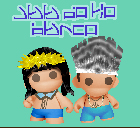







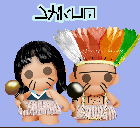






















































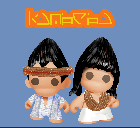







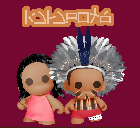




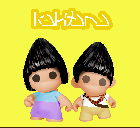

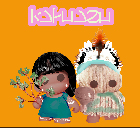























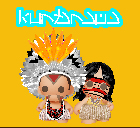









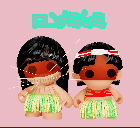










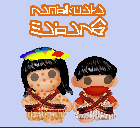
















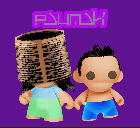




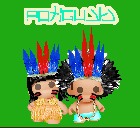


































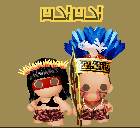





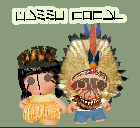






















No comments:
Post a Comment